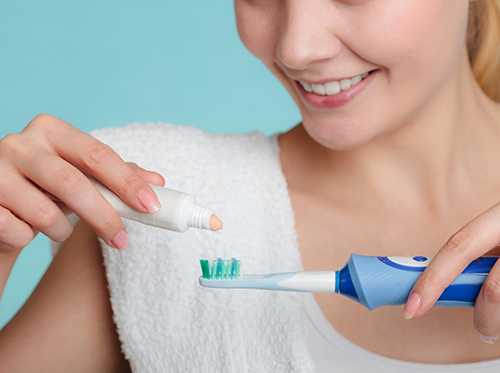Don’t Let Craze Lines Faze You
October 28th, 2020

You’re getting ready for a night out, or you’re checking to make sure you removed every bit of spinach after eating, or you’re practicing your best selfie smile . . . and suddenly, you see something alarming in the mirror—tiny cracks in your tooth enamel! Is this a dental emergency?
Almost always, the answer will be no. Cracks like this are most likely “craze lines,” and craze lines are not serious cracks in your teeth. These diminutive flaws are shallow vertical cracks in the enamel which don’t go all the way through the tooth and don’t affect the tooth’s structural integrity. Like the crazing on a piece of glazed pottery, these tiny cracks are superficial, and the only reason for concern is cosmetic.
- Cause for Crazing?
Time and normal wear on our enamel are the most common culprits. Years of biting and chewing are stressful.
But you can help prevent additional craze lines by avoiding bad habits which can put external stress on your teeth: nail biting, knocking on teeth with oral jewelry, crunching down on ice cubes, using your teeth to open bottle caps—in fact, using teeth for anything other than chewing food.
Grinding your teeth is also hard on your enamel. If you suffer with bruxism (the medical term for tooth grinding), ask Susan Snyder about a mouthguard or night guard. Eliminating the extra stress of unconscious grinding and clenching reduces the chances of craze lines. Even better, getting treated for bruxism can reduce the risk of serious pain and damage to your teeth and jaws.
- Staining Can Make Craze Lines More Visible
Craze lines are often invisible unless the light is just right. However, you can make craze lines more noticeable if you drink coffee, tea, red wine, or dark sodas regularly. And if you need another reason to give up tobacco products, smoking, chewing, or any other use of tobacco can also darken craze lines.
Stains in craze lines don’t usually respond to brushing. You might be able to lighten stains with home or professional whitening. Ask Susan Snyder for the options which are best for your staining.
- Repairing Craze Lines
Don’t let tiny flaws keep you from smiling! If you are unhappy with the appearance of your enamel, talk to us about possible treatments, including bonding and porcelain veneers.
- When It’s More Than a Craze Line
While a craze line is generally nothing to be concerned about, a deep line, or a line which is getting bigger, might suggest a crack in the tooth. Cracks need to be assessed and treated to avoid damage not only to the exterior of the tooth, but to the pulp of the interior as well.
How can you tell the difference? Craze lines are not painful; a cracked tooth might be. Sensitivity to hot and cold foods, painful chewing, gums swollen around a tooth, pain when you bite down, a crack that is getting larger—any of these symptoms could be a sign that you have a cracked tooth. These are reasons to visit our Lafayette, Indiana dental office ASAP.
Craze lines might be medically harmless, but if they impact your confidence, that’s a problem. Our team can help you change habits that are causing craze lines, remove staining, or repair cosmetic damage. If you’re not crazy about those craze lines, ask us for solutions that will bring back your confidant smile.























































 Top
Top
 Website Powered by Sesame 24-7™
Website Powered by Sesame 24-7™